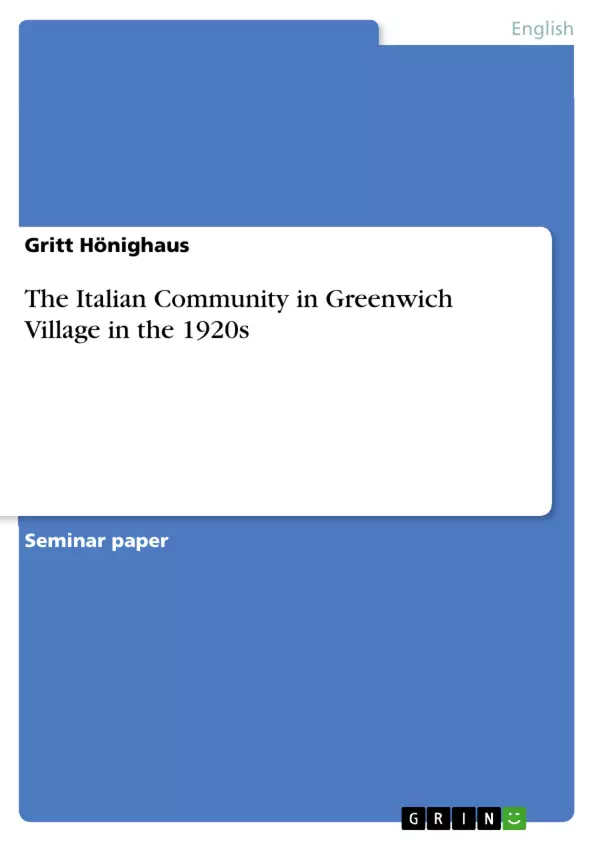Introduction
1.1. The 1920s in the United States
The 1920s - also called the Roaring Twenties - proved to be a decade of triumphant capitalism in the United States. The American economy which was characterized by recession after World War I began to recover. By 1922 it was growing rapidly and prospering. New industries like the car industry stimulated other industries like rubber, oil and steel production and the construction of new highways. Besides, the mass production of cars brought hundreds of thousands of new jobs. Technological innovations like the assembly line increased the productivity by more than 40 per cent. The proportion of women working outside home went up, too. There was a need for secretaries, typists and filing clerks, which were new women's jobs. Real wages increased dramatically.
This rapid process of modernization took place without governmental intervention. American politics went back to a tradition of the late 19th century, namely the faith in a strong economy with a weak state. Warren G. Harding's presidency which was marked by bribery scandals was followed by President Calvin Coolidge whose motto was "The business of America is business."
The 1920s were a bad time for organized labor. Union membership went down because the managements of the factories discouraged its growth by intimidation and brutal violence.
In summary one can say it was a time of severe hardship and repression for working-class men and women but a time of prosperity for the middle and upper classes.
[...]
Table of Contents
- Introduction
- The 1920s in the United States
- Greenwich Village in the 1920s
- People in Greenwich Village
- The Italian Community
- Immigration and Settlement
- Religion
- Education
- Recreation
- Family
- Conclusion
Objectives and Key Themes
This paper aims to provide an overview of the Italian community in Greenwich Village in the 1920s. It explores their immigration experiences, cultural practices, and social dynamics within the context of the broader social and economic changes occurring in the United States during the Roaring Twenties.
- Italian immigration to Greenwich Village
- The Italian community's cultural practices and institutions
- The impact of ethnic divisions on the Italian community
- The relationship between the Italian community and other ethnic groups in Greenwich Village
- The social and economic conditions of the Italian community in the 1920s
Chapter Summaries
The introduction of the paper contextualizes the Italian community in Greenwich Village by examining the broader historical context of the 1920s in the United States, including economic prosperity, social changes, and the rise of the Jazz Age. It also provides a brief overview of Greenwich Village itself as a bohemian enclave known for its artistic and intellectual circles.
The chapter on the Italian community focuses on their immigration experiences, settlement patterns, and social characteristics. It explores the diverse origins of the Italian population in Greenwich Village, from Northern Italy to the South and Sicily, and the reasons for their settlement in the area.
Keywords
The key themes of this paper include Italian immigration, cultural diversity, ethnic divisions, Greenwich Village, the 1920s, the Roaring Twenties, and social and economic conditions.
- Arbeit zitieren
- Gritt Hönighaus (Autor:in), 2000, The Italian Community in Greenwich Village in the 1920s, München, GRIN Verlag, https://www.hausarbeiten.de/document/3432


